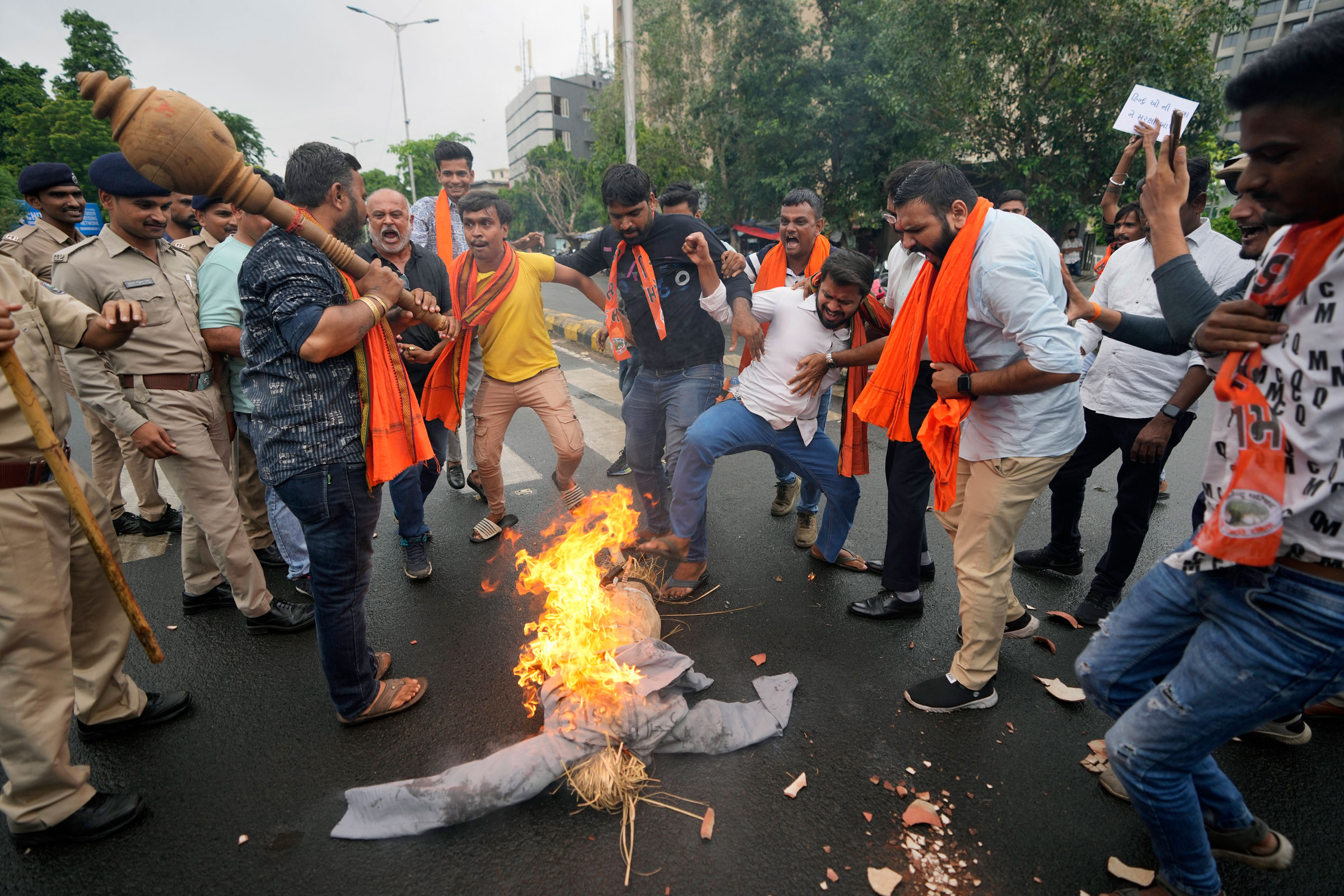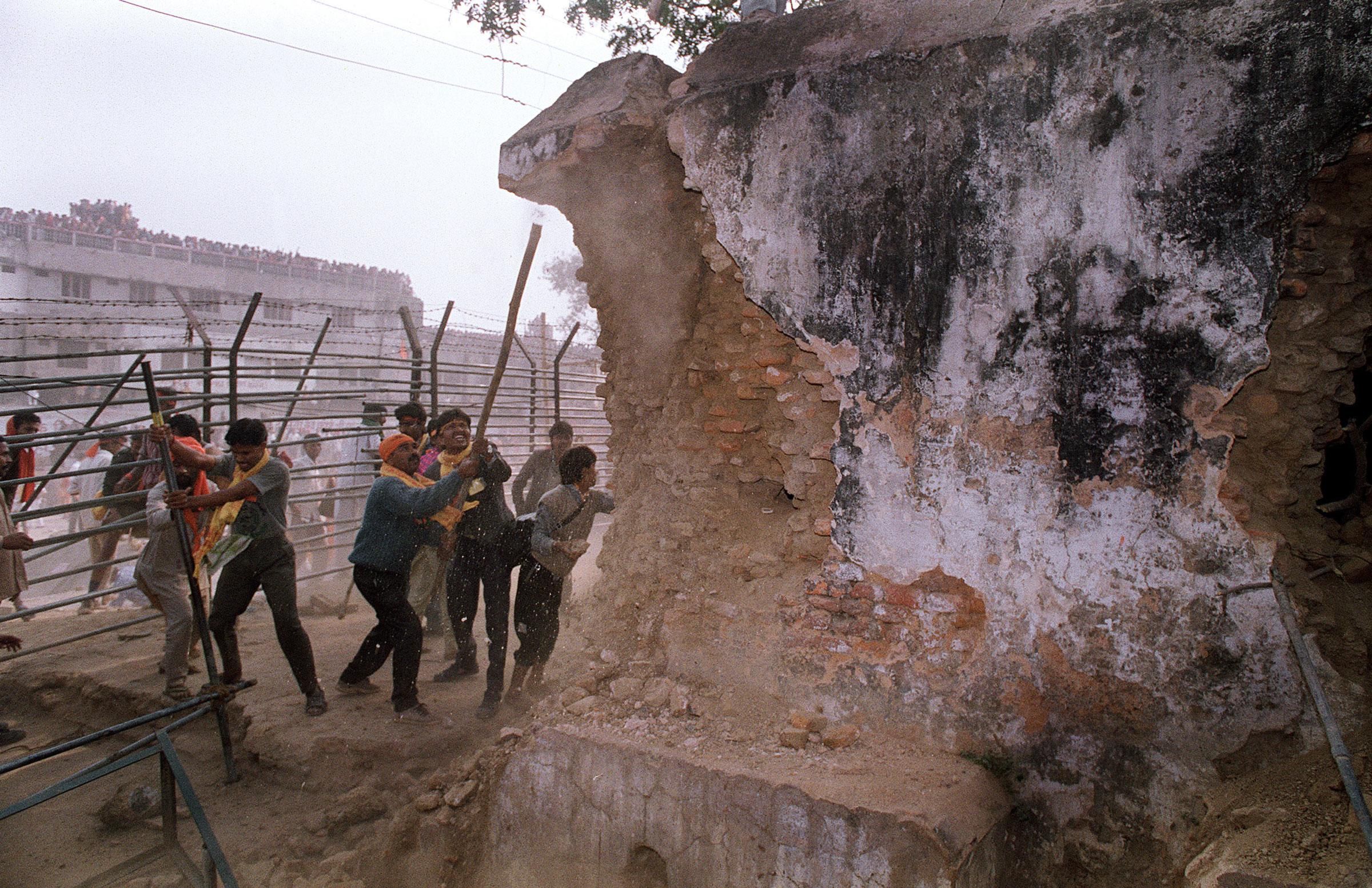
About a month ago, a video emerged of an Indian teacher telling students to slap a 7-year-old classmate. The boy had gotten his multiplication tables wrong, but his real crime was being an Indian Muslim.
India used to be a secular democracy, but its current leader, Narendra Modi of the ruling Bharatiya Janata Party (BJP), advances a radically different vision. Modi wants India to become a Hindu nation, in which India’s religious minorities (about 20% of the population) are second-class citizens and Muslims especially (about 14% of Indians) are compelled to accept increasing majoritarian violence. Indeed, stories of terrorizing Indian Muslims have become depressingly common in Modi’s India, with human rights groups documenting rising violence with each passing year. International groups, such as Freedom House and V-Dem, consider India only “partly free” and an “electoral autocracy” owing to the sharp decline of human and civil rights.
The BJP has always considered Muslims to be less Indian than Hindus. The political party was formed in 1980 as an offshoot of the Rashtriya Swayamsevak Sangh (RSS), an all-male paramilitary organization founded in 1925 and modeled on Italian fascist groups such as Mussolini’s Blackshirts. Both the BJP and RSS view India as a nation for Hindus, by Hindus, and seek to coalesce and mobilize a Hindu identity that historically was porous and varied.
Early Hindu nationalist leaders endorsed violence against Indian Muslims. For example, in December 1938—mere weeks after Kristallnacht—the Hindu nationalist leader V. D. Savarkar declared that Muslims who oppose Hindu interests “will have to play the part of German-Jews.” The RSS’s second leader, M. S. Golwalkar, proclaimed that Germany’s “purging the country of the semitic Race - the Jews” is “a good lesson for us in Hindusthan to learn and profit by.” Such genocidal calls remain current today. In 2021, a Hindu nationalist leader urged his followers to be prepared to kill millions of Indian Muslims. Watchdog groups, including Genocide Watch and Early Warning (a project of the United States Holocaust Memorial Museum), caution that signs of genocide are already manifest in India.
Modi is a lifelong member of the RSS. Before he became India’s Prime Minister in 2014, he was Chief Minister of Gujarat, a state which, during his watch in 2002, saw India’s worst communal riots since partition—leaving at least 1,000 people dead, most of them Muslim. This earned him international rebuke, including a 2005 U.S. travel ban, and notoriety at home as an anti-Muslim strongman. That reputation helped propel Modi and the BJP to victory in India’s 2014 general election. After five years of rising Hindu nationalist violence against Indian Muslims, Modi led the BJP to another election win in 2019. Although many Indians—including many Hindus—oppose the BJP, it currently enjoys unprecedented power to reshape India.

Textbook wars
A key piece of the BJP’s agenda involves twisting history to demonize Muslims, and Hindu nationalists often zero-in on the Mughals, a dynasty that ruled parts of northern and central India during its heyday from about 1560 to 1720. Chief among Hindu nationalist disinformation about the Mughals are that these kings fuelled Hindu-Muslim conflict, a phenomenon that largely developed during British colonial rule (1757–1947). By vilifying earlier Indian kings, the British deflected attention from their exploitative and harmful colonial enterprise.
Contemporary Hindu nationalists follow British colonial ideas regarding Indian history—but they go further in attacking the Mughals. Sometimes Hindu nationalists falsely accuse the Mughals of committing a genocide. Other times they falsely malign the Mughals as colonialists, which depicts them—and by extension all Muslims today—as a foreign threat to India.
Hindu nationalists have in turn attacked the Taj Mahal as a Mughal-built monument, omitting it from tourist booklets and promoting the conspiracy theory that it used to be a Shiva Temple. They have removed parts of Mughal history from school textbooks. This renders many Indian children ignorant of key parts of their own history, including that the Mughals built a multicultural empire, patronized Hindu and Muslim religious groups, and relied on Hindu elites known as Rajputs to rule.
Hindu nationalists have also razed historical mosques. Most prominently, in 1992, a Hindu mob illegally destroyed an early 16th-century Mughal mosque in Ayodhya, a town in northern India. In 2020, Modi laid the foundation stone for a modern temple to the Hindu god Ram atop the mosque’s ruins. When completed, Ayodhya’s Ram Temple will embody the heady mix of anti-Muslim iconoclasm and Hindu triumphalism that is core to the BJP’s vision.

After having students hit their 7-year-old Muslim classmate, the Indian teacher stated defiantly: “I do not regret my act; people are with me.” Indeed, over the past decade, Indian Muslims have been subjected to violent and often deadly assaults by India’s Hindu majority for praying, marrying across religious lines, celebrating holidays, eating beef, protesting government policies, reporting on Hindu nationalism, and more. Many used to take comfort in the aphorism that “India is not Modi,” but it now sounds like wishful thinking.
As the BJP’s agenda continues and Indian democracy erodes, we will likely see more attacks on religious minorities, especially Muslims, in both India’s past and present.
More Must-Reads from TIME
- Caitlin Clark Is TIME's 2024 Athlete of the Year
- Where Trump 2.0 Will Differ From 1.0
- Is Intermittent Fasting Good or Bad for You?
- The 100 Must-Read Books of 2024
- Column: If Optimism Feels Ridiculous Now, Try Hope
- The Future of Climate Action Is Trade Policy
- FX’s Say Nothing Is the Must-Watch Political Thriller of 2024
- Merle Bombardieri Is Helping People Make the Baby Decision
Contact us at letters@time.com